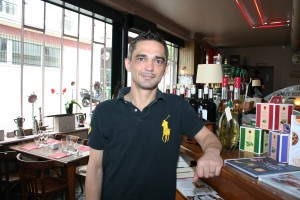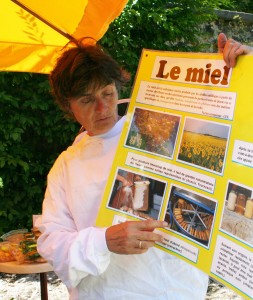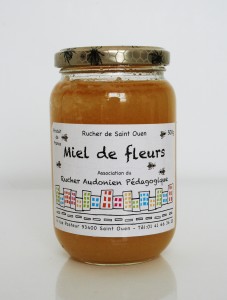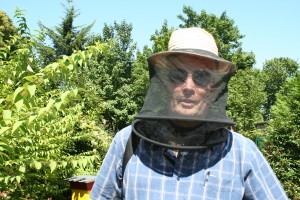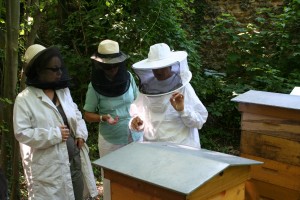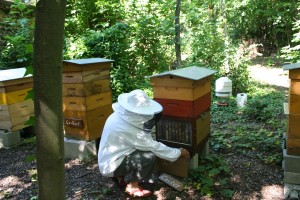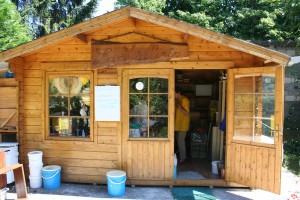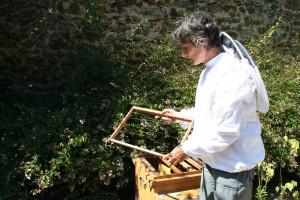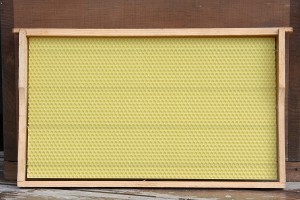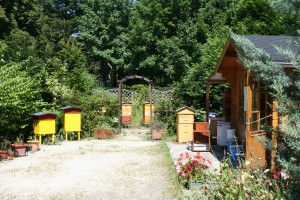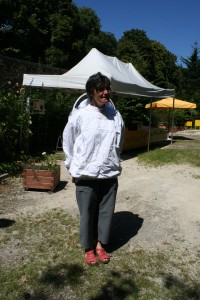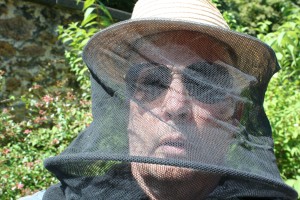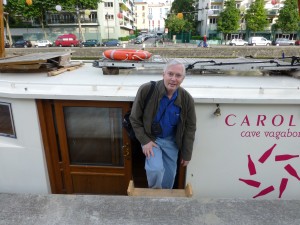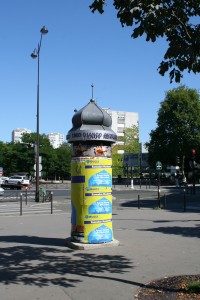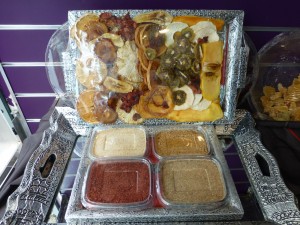
Background: tray of dried fruits
Foreground: powdered fruits
Clockwise from upper left: orange, mango, lemon, strawberry
Photograph by www.DiscoverParis.net
Last May we stopped by Nabil Debabha’s shop on Ile Saint-Louis where we tasted an assortment of his delicious dried fruits, nuts, and Oriental sweets. On Sunday, I stopped by again and learned that he has a new product, powdered fruit. It comes in four flavors: strawberry, lemon, orange, and mango. I took home a sample of strawberry to try.
By itself, the powdered strawberry tastes slightly tart. At Nabil’s suggestion, we added it to tea and yoghurt. We brewed a cup of English breakfast tea and added a tablespoon of the powder. It does, indeed, produce a pleasant strawberry-flavored tea. Added to yoghurt, it transforms the product into an agreeable strawberry-flavored dessert. In both cases, we added sweetener, which we found necessary to bring out the flavor.
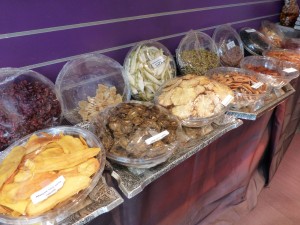
Display of Dried Fruits including Mango, Sour Cherry, Kiwi, and Pineapple
Photograph by www.DiscoverParis.net
As well as the powdered product, Nabil gave me a sample of his dried fruits. I particularly enjoyed mango, but I also tasted pineapple, kiwi, strawberry, as well as other fruits. All of them are fun to snack on!
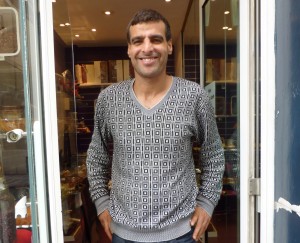
Nabil Debabha
Photograph by www.DiscoverParis.net
Nabil’s shop is located on Ile Saint-Louis at 1, rue des Deux Ponts. His telephone number is 07.60.09.85.21. He is open seven days a week from 10:30 a.m. to 11:00 p.m. There is no name on the store front. Just look for the display of fruits, nuts, and sweets in the window!
* * * * * * *

We participate in Wanderfood Wednesdays. Head over there to explore food from around the world!
* * * * * * *
Like our blog? Join us on Facebook!

